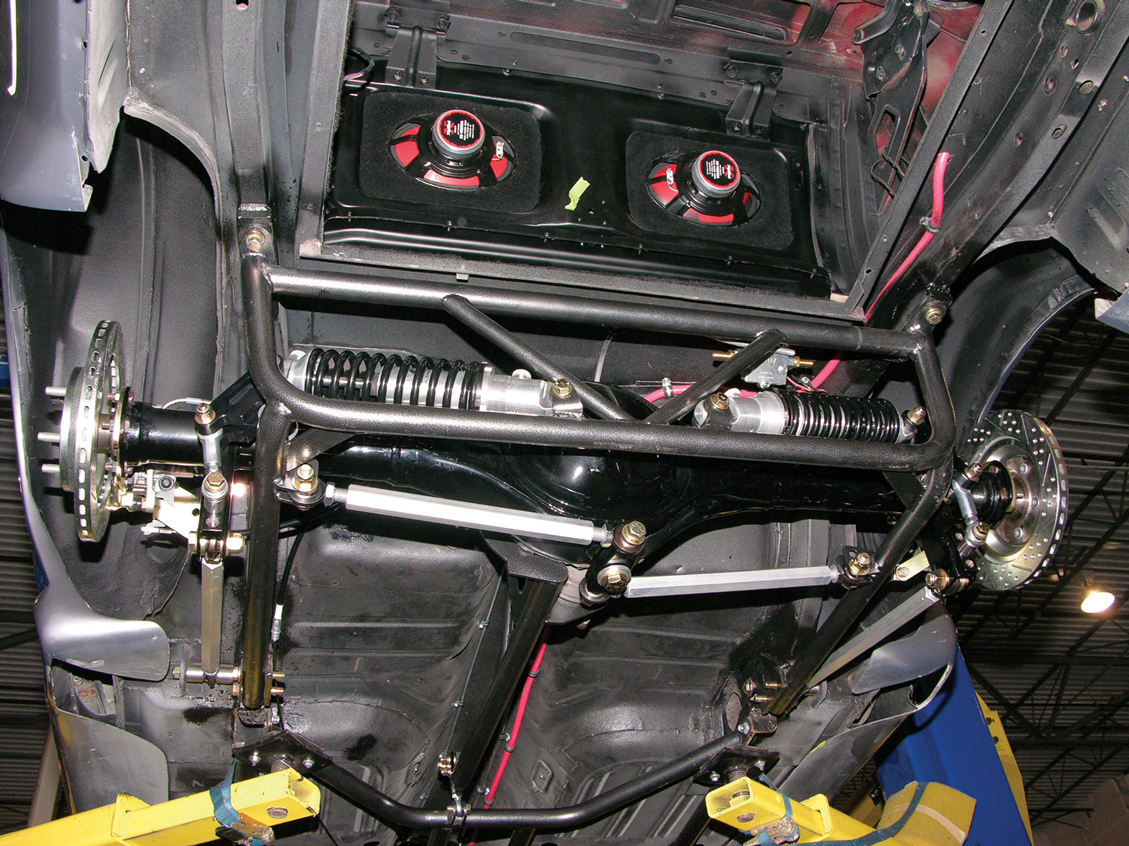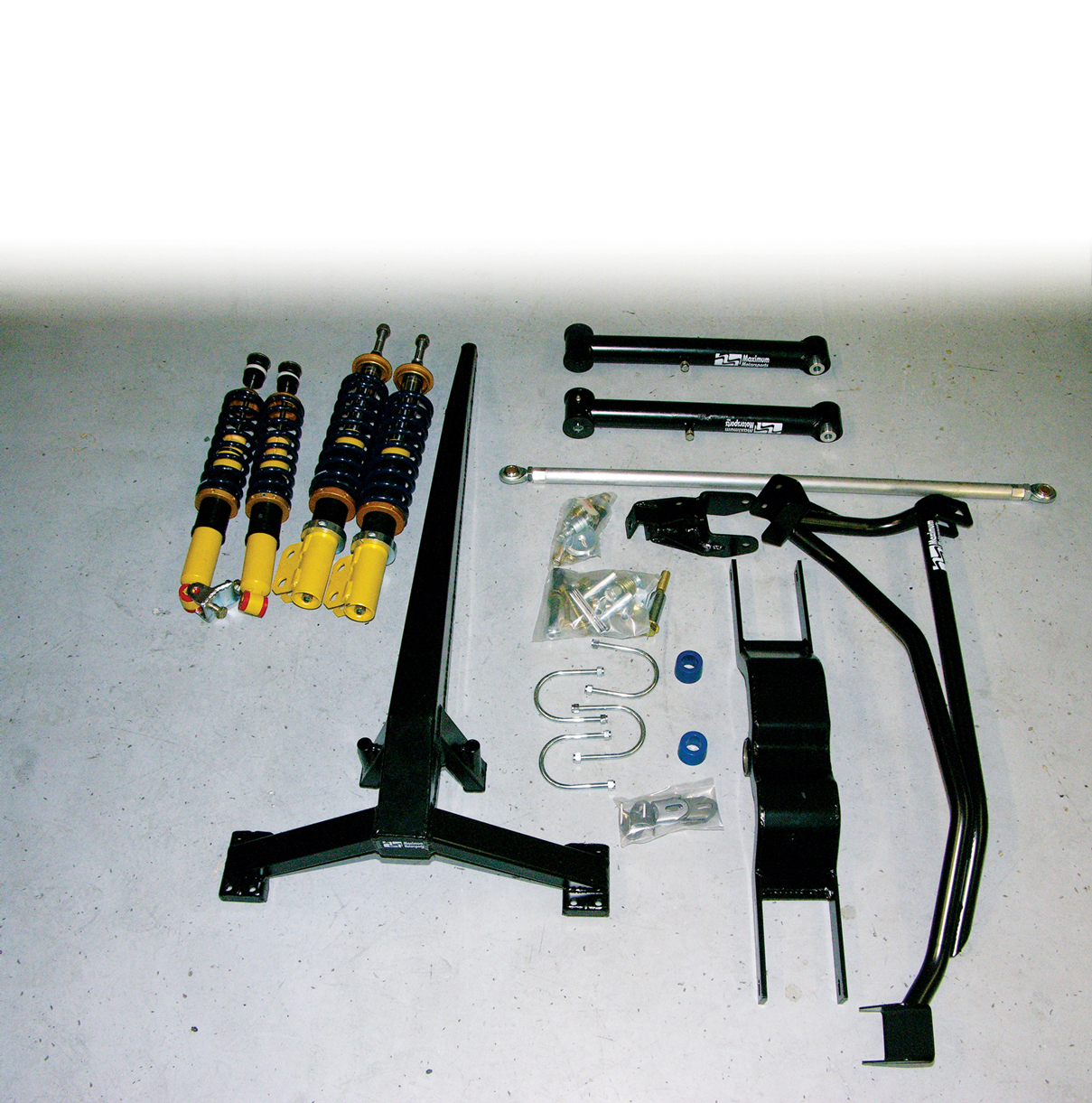Suspension

We’ve already tempted and teased our readers with a behind-the-scenes tour of the Unique Performance Shelby continuation cars—the GT 350SR and the GT 500E (Ford Builder, Mar. ’05, page 67). Many of you probably lust after one or both of these cars, but not all of us can afford to purchase one yet. And because of their limited numbers, their prices do, unfortunately, put them out of reach of many of us Ford enthusiasts. That’s the bad news. But there is good news; don’t assume that because you cannot buy a genuine continuation Shelby, you can’t build a car that drives just like one. Unique Performance sells not only the cars as complete packages, but they understand the situation quite clearly and have made available many of the individual parts and assemblies used to build their cars.

Maximum’s design replaces the upper control arms with a torque arm and a Panhard rod, each of which has only one job rather than two. The Panhard rod centers the axle from side to side, and the torque arm controls pinion angle. Assigning each of these duties to separate components allows each piece to be better at its one job than the stock upper control arms are at either job. The torque arm is essentially a three-link design, and Maximum claims that it improves traction so much that after installation you may have to alter your sway bars to prevent understeer.

Although modifying a car to handle well can often seem like a black art, virtually every aspect of handling comes down to three things: the weight of the vehicle, the traction generated by the tires, and the distribution of weight on each particular tire at a given moment.

The late ’60s was a good time for automobile enthusiasts everywhere. For Chevrolet specifically, it remains a time when the company produced vehicles that are among the favorites of Bow Tie aficionados. Who wouldn’t want a ’67-’69 Chevy Chevelle, Nova or, of course, the ever-popular Camaro? The design of these vehicles, and many others from that era, has stood the test of time, and car manufacturers today are even reverting back to the styling cues of these classics when designing modern production cars.
These are great days to be a muscle-car enthusiast. Performance parts are plentiful, new stampings to replace rusted sheetmetal are regularly popping up, and GM’s crate motor program makes it easier than ever to drop in a new power plant that combines incredible power with everyday drivability. Old Camaros or Novas have been passed over because they were saddled with a wimpy six. Now, however, they are the perfect candidates for a heart transplant, namely, in the form of Chevrolet’s marvel of horsepower engineering: the LS1 engine.







